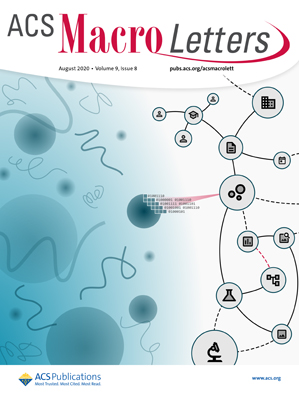用于柔性钠离子混合储能的阴离子交换聚合物水凝胶电解质的高钠离子传导性和机械完整性
IF 5.1
Q1 POLYMER SCIENCE
引用次数: 0
摘要
聚合凝胶电解质的吸引力在于其离子电导率高于干聚合物电解质,而且在扩大电位窗口时水活性较低。然而,Na 离子导电聚合物凝胶电解质的离子电导率和机械强度受到限制,分别低于 20 mS cm-1 和 2.2 MPa。在此,我们展示了用于柔性钠离子混合电容器(f-NIHC)的化学耦合聚(二烯丙基二甲基氯化铵)-糊精-N,N′-亚甲基双丙烯酰胺薄膜(ex-DDA-Dex + NaClO4)的Na离子导电柔性聚合物水凝胶电解质。其中,ex-DDA-Dex 与最佳 ClO4- 的阴离子交换反应和协同作用使其在 25°C 时的离子电导率高达 27.63 mS cm-1,电化学稳定性窗口高达 2.6 V,而双网络结构则使其同时具有水凝胶电解质的机械强度(7.48 MPa)和柔软性。因此,含有 ex-DDA-Dex + NaClO4 的 f-NIHC 在 500 mA g-1 和 10 000 mA g-1 下分别实现了 192.04 F g-1 和 116.06 F g-1 的高比容量和高倍率容量,在 906 W kg-1 下实现了 120.03 W h kg-1 的高能量密度,在 500 次循环中实现了 70% 的长循环性,并在机械应力下实现了功能性运行。本文章由计算机程序翻译,如有差异,请以英文原文为准。
High Na‐ion conductivity and mechanical integrity of anion‐exchanged polymeric hydrogel electrolytes for flexible sodium ion hybrid energy storage
The polymeric gel electrolytes are attractive owing to their higher ionic conductivities than those of dry polymer electrolytes and lowered water activity for enlarged potential window. However, the ionic conductivity and mechanical strength of the Na‐ion conducting polymeric gel electrolytes are limited by below 20 mS cm−1 and 2.2 MPa. Herein, we demonstrate Na‐ion conducting and flexible polymeric hydrogel electrolytes of the chemically coupled poly(diallyldimethylammonium chloride)‐dextrin‐N,N′‐methylene‐bis‐acrylamide film immersed in NaClO4 solution (ex‐DDA‐Dex + NaClO4) for flexible sodium‐ion hybrid capacitors (f‐NIHC). In particular, the anion exchange reaction and synergistic interaction of ex‐DDA‐Dex with the optimum ClO4− enable to greatly improve the ionic conductivity up to 27.63 mS cm−1 at 25°C and electrochemical stability window up to 2.6 V, whereas the double networking structure leads to achieve both the mechanical strength (7.48 MPa) and softness of hydrogel electrolytes. Therefore, the f‐NIHCs with the ex‐DDA‐Dex + NaClO4 achieved high specific and high‐rate capacities of 192.04 F g−1 at 500 mA g−1 and 116.06 F g−1 at 10 000 mA g−1, respectively, delivering a large energy density of 120.03 W h kg−1 at 906 W kg−1 and long cyclability of 70% over 500 cycles as well as demonstrating functional operation under mechanical stresses.
求助全文
通过发布文献求助,成功后即可免费获取论文全文。
去求助
来源期刊
CiteScore
10.40
自引率
3.40%
发文量
209
审稿时长
1 months
期刊介绍:
ACS Macro Letters publishes research in all areas of contemporary soft matter science in which macromolecules play a key role, including nanotechnology, self-assembly, supramolecular chemistry, biomaterials, energy generation and storage, and renewable/sustainable materials. Submissions to ACS Macro Letters should justify clearly the rapid disclosure of the key elements of the study. The scope of the journal includes high-impact research of broad interest in all areas of polymer science and engineering, including cross-disciplinary research that interfaces with polymer science.
With the launch of ACS Macro Letters, all Communications that were formerly published in Macromolecules and Biomacromolecules will be published as Letters in ACS Macro Letters.

 求助内容:
求助内容: 应助结果提醒方式:
应助结果提醒方式:


